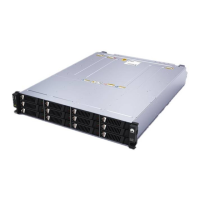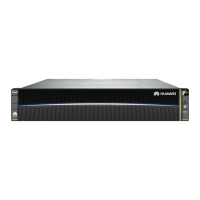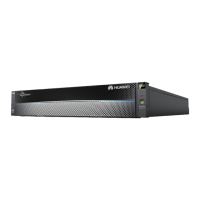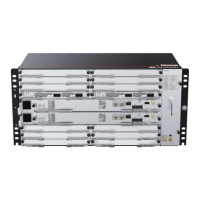N2000H V3 Appliance
User Guide
Huawei Proprietary and Confidential
Copyright © Huawei Technologies Co., Ltd.
Mainboard
One CPU
2 DIMMs
When only two DIMMs are configured, install them in the primary slots. For details, see Table 5-3.
When only one CPU is configured, install it in socket CPU 1. For details, see Figure 5-58.
Step 10 If the fault persists, replace the following components in order:
1. DIMM
2. CPU
3. N2000H V3 mainboard
Step 11 If the fault persists, check the network connection.
----End
8.6 Alarm Information
This topic describes N2000H V3 alarm information.
When a fault occurs, the system generates logs and an alarm based on the faulty module.
When the universal Appliance manager (USM) is configured, the alarm is reported to the
USM over the Simple Network Management Protocol (SNMP). The sensors on the device
monitor the operating environment and generate alarms if the environmental conditions do not
meet device operating requirements.
Event Alarms and Fault Alarms
Based on the impacts on the system, alarms are classified into the following types:
Event alarms
Event alarms record the events that occur during normal system operating. Event alarms
do not affect system operating.
Fault alarms
Fault alarms are generated for faults that affect normal system operating.
Viewing Alarms
You can view alarm information by using either of the following methods:
Use a terminal to log in to the iBMC CLI over Telnet or Secure Shell (SSH), and run the
ipmcget -d healthevents command to view alarms.
To log in to iBMC over Telnet is insecure. By default, iBMC does not support Telnet login. If you
need to log in to iBMC over Telnet, enable the Telnet service on the Config > Port Settings page on
the web user interface (WebUI) of iBMC and save your setting.
By default, iBMC supports SSH login. If SSH service is disabled and you need to log in to iBMC
over SSH, enable the SSH service on the Config > Port Settings page on the WebUI of iBMC and
save your setting.
Use a terminal to log in to the iBMC WebUI, and view alarms on the Alarm & SEL
page.

